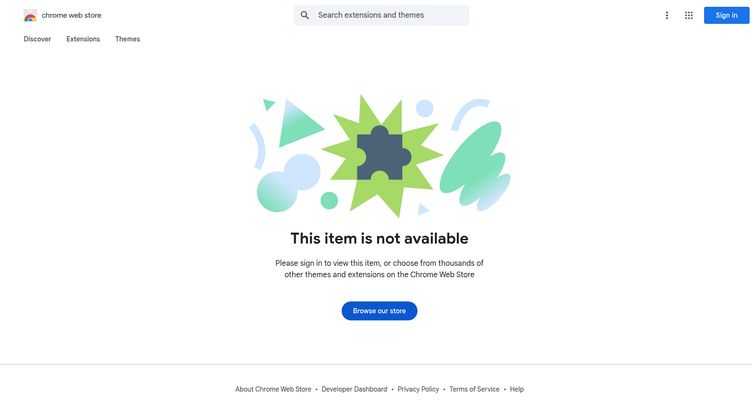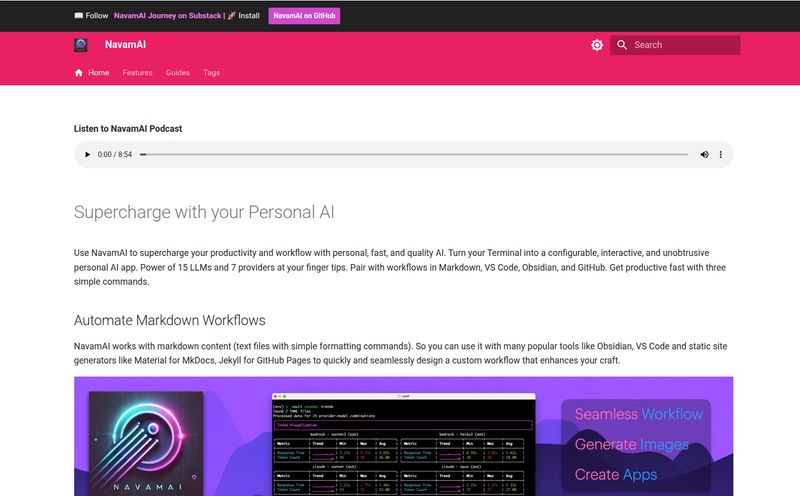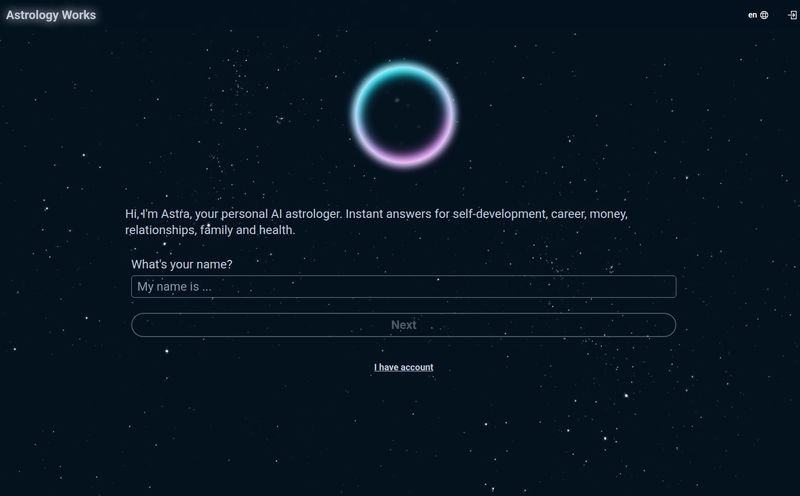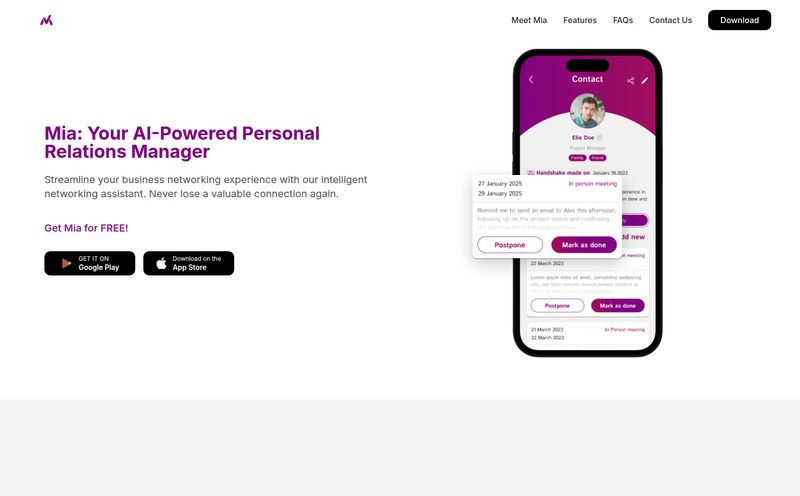I’ve been in the trenches of digital business for a long time. Long enough to remember when 'optimizing for mobile' was a revolutionary idea and when keyword stuffing was, well, still a thing people did without shame. Through all of it, one constant headache has remained: hiring.
Oh, the joy. You post a job for a remote marketing assistant and wake up to 312 applications. Your inbox groans. Your coffee isn't strong enough for this. You spend the next three days of your life sifting through resumes that all start to look like a blurry, Times New Roman-fueled nightmare. We’ve all been there, right?
So, when a tool like Applicant AI pops onto my radar, my ears perk up. An AI-powered Applicant Tracking System (ATS) that promises to be my digital bouncer, only letting the most qualified candidates through the velvet rope? Sign. Me. Up.

Visit Applicant AI
So What Exactly is Applicant AI Supposed to Do?
At its core, Applicant AI is designed to be the first line of defense in your hiring process. It’s an ATS built to automate the most soul-crushing part of recruiting: the initial screening. Instead of you, a human with dwindling patience, reading every single CV, the AI does the heavy lifting. It scans resumes and cover letters, compares them against your job description, and surfaces the people who actually seem to fit the bill.
Think of it like a Sorting Hat for resumes, but instead of Gryffindor or Slytherin, it’s sorting candidates into 'Looks Promising' and 'Thanks, But No Thanks' piles. It’s meant to free up your time so you can focus on the human part of hiring—interviewing, culture fit, and figuring out if the candidate is someone you can actually stand to be in a Zoom call with five days a week.
The Features That Made Me Raise an Eyebrow (In a Good Way)
When I started digging into its proposed feature set, a few things really stood out. This wasn't just a simple keyword scanner; it had some clever tricks up its sleeve.
That LinkedIn to Resume Trick
One of the slickest features mentioned is the ability to convert a LinkedIn profile into a resume or cover letter. I love this. It lowers the barrier to entry for great candidates who might not have a polished PDF ready to go at a moment's notice. It’s a modern approach for a modern workforce. How many amazing people have we missed out on because they couldn't be bothered to update their resume from 2019?
AI-Powered Pre-Screening
This is the main event. The AI doesn’t just match keywords; it supposedly understands context. It can analyze experience, skills, and qualifications to give you a ranked list of applicants. It even claims to be able to ask candidates clarifying questions automatically. That's a huge time-saver. No more back-and-forth emails just to find out if their 'project management experience' was managing a team or just managing their own lunch order.
A Full-Blown (and Free?) Applicant Tracking System
Applicant AI isn't just a screener; it’s a full ATS. This means you get a pipeline to manage candidates from application to offer, a dedicated company careers page, and customizable application forms. The fact that it offers a free ATS is pretty wild. Most robust ATS platforms, like Greenhouse or Lever, come with a hefty price tag. Offering this for free is a gutsy move to get people in the door.
The Good, The Bad, and The AI
Alright, let's get real. No tool is perfect, especially one that involves AI making judgments about people. On one hand, the potential benefits are massive. You can save countless hours and, in theory, reduce human bias. We all have unconscious biases, and a well-trained AI should focus purely on skills and experience, ignoring things like a person's name, age, or background.
However, the AI is only as good as the data it’s trained on. This is the big, scary monster under the bed for all AI hiring tools. If the AI is trained on historical hiring data from a company that has a history of bias, guess what? The AI will just become a more efficient version of that biased system. It’s a classic 'garbage in, garbage out' scenario. There's a real risk of the AI overlooking a diamond in the rough—a candidate with a non-traditional background who could be your next superstar—because they don't fit the predefined mold.
So while I'm excited about the efficiency, I'm also cautious. It’s a tool, not a replacement for human judgment.
Let's Talk Money: What’s the Price?
This is where things get a bit hazy. The information I found repeatedly mentions a "free ATS with essential features," which is a huge selling point. But as for specific paid tiers or pricing plans? Crickets. The official pricing page URL seems to be missing in action. My guess is they were running a classic freemium model: a generous free plan to get you hooked, with paid upgrades for more advanced features, more users, or integrations. It's a solid strategy, but the lack of transparent pricing is a bit of a yellow flag for me.
The Elephant in the Room: Where Did Applicant AI Go?
Okay, so after getting all intrigued, I did what any digital native would do: I went to the Chrome Web Store to grab the extension and try it out for myself. And I was met with this:
"This item is not available. Please sign in to view this item, or choose from thousands of other themes and extensions on the Chrome Web Store."
Poof. Gone. Vanished. It’s like finding a treasure map that leads to a demolished building.
What does this mean? It's hard to say for certain, but I have a few theories. It could be a temporary issue. Or maybe the developers decided to pivot away from a browser extension to focus solely on their web platform. It could also have been acquired by a larger company and absorbed into their product. Or, the more pessimistic take, the project might be defunct. When a tool drops off a major marketplace like the Chrome Store without a clear explanation, it doesn’t exactly inspire confidence.
So, What Now? Some Alternatives to Consider
If you were excited by the promise of Applicant AI, don't despair! The world of AI recruiting tools is exploding. Here are a few places you could look instead:
- Recruiting-focused CRMs: Platforms like Lever, Greenhouse, and Workable are the big players for a reason. They offer powerful ATS features, though they come at a enterprise cost.
- Other AI Screeners: Tools like Textio and SeekOut are doing fascinating things with AI to improve job descriptions and source diverse talent pools.
- Built-in Platform Tools: Even LinkedIn and Indeed have their own built-in screening tools that are getting smarter every day. Don't underestimate the power of the tools you might already be using.
Frequently Asked Questions
- What is an Applicant Tracking System (ATS)?
- An ATS is software that helps companies manage their recruitment and hiring process. It acts as a central database for job applications, allowing recruiters to track candidates through different stages, from initial application to final hire.
- Can AI really help reduce hiring bias?
- It's complicated. In theory, yes. An AI can be programmed to ignore demographic information that can trigger unconscious human bias. However, if the AI is trained on biased historical data, it can perpetuate or even amplify that bias. It requires very careful configuration and ongoing audits to be effective.
- Was Applicant AI really free?
- Based on the available information, it seems to have offered a free plan that included its core ATS features. It's likely that more advanced functionality or higher usage limits were part of a paid subscription, which is a common model for SaaS products.
- Why would a Chrome extension be removed from the store?
- There are many reasons. It could be a violation of the store's policies, a security vulnerability, the developer may have voluntarily removed it to pivot their strategy, or the project could have been discontinued. Without an official statement, it's difficult to know the exact reason.
- Is it worth using AI for screening a small number of applicants?
- Probably not. The real power of these tools comes from handling high volume. If you're only getting 10-20 applicants for a role, the time you'd spend setting up the AI might be more than the time you'd save. A good old-fashioned spreadsheet and a careful read-through is likely more efficient in that case.
My Final Take
Applicant AI feels like a glimpse of a brilliant future for hiring—one that’s faster, smarter, and maybe even a little fairer. The concept is a 10/10. An affordable, AI-powered assistant that tames the chaos of your inbox is the dream for any hiring manager or small business owner.
But the reality of its current status is a bit of a mystery novel. The disappearance from the Chrome Web Store leaves a huge question mark. Is it a ghost in the machine, or is it just regrouping for a bigger comeback? I, for one, am hoping for the latter. The problems it aims to solve are very, very real. For now, I'll be keeping an eye out, hoping it rematerializes. Because my inbox, and my sanity, could really use the help.



